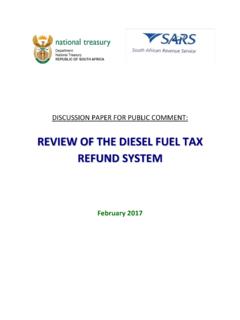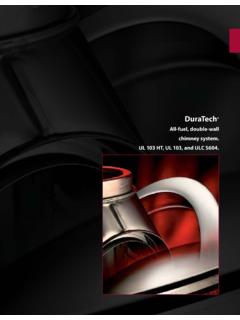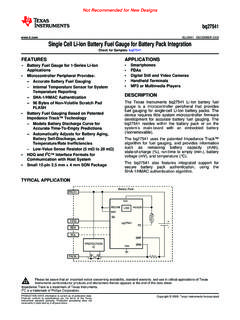Transcription of INDEX FUEL MIXTURE AND IGNITION TIMING CONTROL Page …
1 INDEX . fuel MIXTURE AND IGNITION TIMING CONTROL Page 4. weber injection - IGNITION sistem Page 4. ELEMENTS MAKING UP THE system Page 4. OPERATION PHASES Page 15. CARBURATION Page 15. CHECKING THE fuel CIRCUIT Page 18. CHECK LAMP - DIAGNOSIS OF system TROUBLES Page 21. ELECTRONIC IGNITION / injection CABLE ASSEMBLY Page 25. ELECTRICAL SCHEMATIC Page 26. SPECIAL SHOP TOOLS Page 27. INTRODUCTION. Application of an electronically controlled injection - IGNITION system to 8-cycle engines has made it possible to optimize their performance to give more power with less specific fuel consumption with less unburned fuel in the exhaust. These advantages have been obtained thanks precise regulation of air- fuel MIXTURE and IGNITION TIMING . The illustrations and description in this booklet are indicative only and the manufacturer reserves itself the right to introduce any modification it may deem necessary for better performance or for constructive or commercial reasons without prior notice.
2 MOTO GUZZI - SERVIZIO PUBBLICAZIONI TECNICHE. 6/89 - 1500 K - COD. 299201 60. Printed in Italy Revision Notes: 1. Original manual scanned and edited 2/18/01. DJP. -1- -2- -3- fuel MIXTURE AND IGNITION TIMING CONTROL . CONTROL of the air- fuel ratio and the IGNITION TIMING is the basic element in optimizing engine performance. The air- fuel ratio is given by the ratio, in terms of weight, of air and gasoline drawn in by the engine. The ideal or stoichiometric ratio is that which produces total combustion. Too much or too little air causes respectively lean or rich mixtures which in turn affect power and fuel consumption (see Fig. 1) and exhaust emissions (see Fig. 2). Electronic IGNITION TIMING CONTROL allows maximizing engine performance and power, and minimizing fuel consumption and emissions. Electronic IGNITION TIMING CONTROL combined with electronic fuel supply CONTROL allows engine performance to be optimized under such varied conditions as low temperature start up, maximum acceleration and normal cruising at partial load.
3 weber injection - IGNITION system . The Model Alfa/N weber injection - IGNITION system , in which engine speed and throttle valve position are used to measure the amount of aspirated air, notes the amount of air and meters the fuel accordingly. Other sensors within the system allow the base strategy to be changed under special operating additions. The engine speed and the throttle valve angle allow the optimal IGNITION advance to be calculated for every operating condition. The amount of air drawn in by each cylinder for each cycle will depend on the air density in the intake air manifold, the unitary displacement and the volumetric efficiency. Volumetric efficiency is established experimentally on the engine for its entire operational field and this is then programmed in a map in the computer. The injection system is the sequential multi-port type meaning fuel delivery to each cylinder is independent of conditions at the other cylinder.
4 fuel delivery for one cylinder can occur during the combustion and exhaust phase of the other cylinder. fuel delivery TIMING for starting is also in the map in the computer. IGNITION is by static induction spark with dwell CONTROL in the power module and spark advance curves programmed in the computer. ELEMENTS MAKING UP THE system . fuel circuit fuel is injected into the intake passage for each cylinder upstream of the intake valve. The circuit consists of a tank, pump, filter, pressure regulator valve and electromagnetic injectors. Intake air circuit This consists of an air filter, intake manifold and throttle valve. The throttle position sensor (TPS) is a potentiometer mounted on the bottom of the throttle butterfly valve stem. The barometric pressure sensor and the air temperature sensor are positioned upstream of the throttle valve. Electric circuit This is the circuit used by the computer to adjust the fuel supply and IGNITION TIMING to provide optimum performance and reduced emissions under a variety of operating conditions.
5 It includes: a battery, IGNITION switch, two relays, the computer, the IGNITION assembly, barometric pressure sensor, air temperature sensor, throttle position potentiometer, two injectors, oil temperature sensor, rpm and TIMING sensors. -4- fuel CIRCUIT. The electric pump draws fuel from the tank and sends it through a filter to a manifold equipped with feed branches to the injectors. A pressure regulating valve maintains steady fuel pressure by bleeding excess fuel back into the tank. Electric fuel pump This is a roller positive displacement pump with the motor submerged in the fuel . The motor is a permanent magnet carbon brush type. When the impeller is turned by the motor, the fuel is moved from the intake orifice to the delivery port. The amount of fuel is determined by the rollers which adhere to the outer ring while the motor is turning. The pump has a check valve to prevent the fuel circuit emptying when the pump is not running.
6 It is also equipped with an overpressure valve which short-circuits the delivery when the pressure is over 74 psi to prevent the pump motor from overheating. Delivery: gal/hour at 44 psi with 12V power supply. The pump draws about amps. Note: We recommend strict cleanliness whenever the hoses are installed or removed, or when work is done on the system . -5- fuel filter This filter has a 10 m. paper element with a filtering surface of 1200 cm2. This filter is essential because the injectors are easily clogged by contaminants. The filter is mounted between the pump and the pressure regulating valve. An arrow in the casing indicates flow direction. The filter should be changed every 6,200 miles. Injectors The injectors CONTROL the amount of fuel delivered to the engine. The injector is an ON-OFF valve. It has just two operating modes, open or closed.
7 The injector consists of a shell and a pin forming part of the magnetic armature. This pin is pressed up against its seat by a spiral spring whose load is determined by an adjustable push ring. The winding is -6- housed in the rear part of the casing while the injector nose is at the front (seal seating and pin guide). The CONTROL impulses from the computer create a magnetic field which attracts the armature and thus opens the injector. The amount of fuel injected depends solely on the amount of time the injector is open, assuming constant fuel viscosity and density, and constant pressure differential. This time is established by the computer depending on the engine's operating environment. When the fuel pressure is in the range of 34-40 psi, the jet breaks into a spray as soon as it leaves the nozzle and forms an arc of approximately 30 . Resistance value: 12.
8 If you want to test the injector electrically, apply a maximum of 6 volts for an extremely short period of time. Pressure relief valve This valve maintains steady pressure to the injectors. It is a differential membrane type and is factory set at 3 psi. The pressurized fuel from the pump exerts pressure against the mobile part (1) which is countered by the calibrated spring (3). When the set pressure is exceeded, the valve cup moves (2) and the excess fuel flows back into the tank. Note that to keep the injector pressure stage steady, the difference between fuel pressure and intake manifold pressure must also be constant. This is achieved by running a tube between the seating of the calibrated governor spring (3) and the intake manifold. -7- 1) Mobile element 2) Cup valve 3) Calibrated counter-spring AIR CIRCUIT. The air circuit is made up of the throttle valve and the air filter assembly.
9 The barometric pressure and air temperature sensors measure conditions in the filter. [The temperature sensor is mounted on the frame in front of the air snorkel on a Cal 1100i] The fuel pressure relief valve measures conditions in the intake manifold. The throttle position reading potentiometer is on the butterfly stem of the throttle valve. -8- Intake manifold and throttle valve The amount of air intake is determined by the opening of the butterfly valve (1) in the intake air manifold on each cylinder. The air needed for idling goes through the by-pass channel (2) which has an air adjusting screw (3). Turning this screw varies the amount of air admitted to the manifold to adjust the idle speed. A second screw (4) with a locking nut allows the butterfly valve closing to be adjusted correctly to prevent it hitting up against the surrounding manifold.
10 This screw should not be used to adjust the idle setting. 1) Throttle valve 2) By-pass passage 3) Air regulation screw 4) Butterfly positioning screw -9- ELECTRIC CIRCUIT. Relays The weber injection - IGNITION system uses two socket mounted automotive relays. [The stock Siemens V23073 relays are trouble prone. Suitable substitutes are Siemens V23074, Bosch 0-332-207-307, Radio Shack 900-2391] The grounding connection of the relay energizing circuit is done in the power pack with a guard to prevent inverting the polarities. These two relays CONTROL : fuel pump power supply computer and injector power supply weber injection - IGNITION computer The weber injection - IGNITION computer is an electronic digital microprocessor CONTROL unit. It controls the parameters for the fuel supply and IGNITION : amount of fuel delivered to each cylinder injection TIMING IGNITION advance To calculate these parameters, the unit uses the following input signals: barometric pressure intake air temperature oil temperature engine speed and TIMING battery voltage throttle valve position - 10 - 1) CO regulation protection cap to prevent tampering Barometric pressure sensor The sensor is supplied with power by the computer and measures the air pressure in the air filter.



